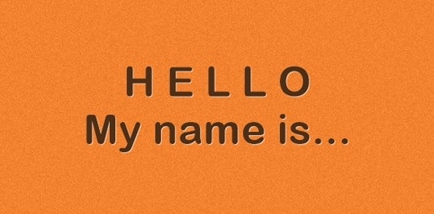In my early 20s, I worked as an editorial assistant for a group of community newspapers in the Boston area. My editor there was fond of saying, “If nothing else, make sure you spell their names right.”
She knew that misspelling a subject’s name in an article was both disrespectful to that person and potentially misleading to the reader. Dealing with the consequences of a misspelled name would distract us from our work covering the local community. It was better to avoid this problem altogether by getting everyone’s name right.
Of course, in the fundraising world, we all know this same spelling rule is very important. Good luck getting that meeting with a potential donor when you spell his name incorrectly in your introductory email. Forget a repeat gift if you botch a donor’s name in your annual report. Fundraising office staff spend countless hours trying to keep these errors from seeing the light of day.
Verifying names
These efforts work very well for our contacts in the United States and other countries where names are spelled using the Latin alphabet… but what happens when we need to proofread the names of constituents who live elsewhere? The best way to verify these names is to have people who are fluent in the languages used by our prospects review our records. This option is not always possible due to staff and budget limitations, however.
If you don’t know how to read the languages in which your prospects names are written, you have a tough job ahead. How do you verify a name that originally was written in a language that does not use the Latin alphabet, such as Cyrillic or Arabic? What about those names that come from languages that don’t use alphabets at all, like Chinese?
The usual suspects: international name problems in databases
I do a lot of international wealth screenings for a wide range of organizations. These projects have given me the chance to look at names for individuals living around the world. From this experience, I have seen that all databases contain name errors for international constituents.
Some of these errors are due to simple typos. Other times, they have their roots in transcriptions of hard-to-read forms, like incoming parent documents, that have been faxed from the other side of the planet. Because the names in question are unfamiliar to those staff members reading the forms and maintaining databases, these kinds of errors often go undetected.
When I screen incoming parent lists, I also find the names of education consultants mistakenly listed as “parents.” In those cases, the schools have no records of who the actual parents are. (This happens a lot, by the way, and will be a topic of a future blog post.)
So, how can your organization start to get these issues under control?
Starting to address the problem
Through my consulting work with clients, I have developed several methods for dealing with these problems. While these all take strategic planning and time, I can recommend two simple things to help you get started:
- Collect names whenever you can.
- Make sure you get those names written in your constituents’ local languages.
In one of my recent posts, I gave examples of ways in which universities are engaging their international alumni. All of the examples shown in that post offer opportunities to collect this type of information. If you are having an event for your international constituents, make sure someone from your organization is responsible for requesting and collecting business cards from attendees. Ask your attendees to bring business cards in their local languages to these events.
If an international prospect sends correspondence to your office on letterhead written in his or her local language, keep it! Finally, when all else fails, send an email to your constituent asking for his or her name in English and local language forms.
From paper to electronic format
The name information you collect may not be in an electronic format, but it will need to get there in order to be useful to your organization. You will need it in electronic format to put it in a database or include it in a local-language mailing. Your prospect researchers will need it in electronic format to find useful information. So, how do you go from a printed version to an electronic one? In an upcoming post, a video tutorial, I will show you how to use a free tool that will let you overcome this hurdle.

